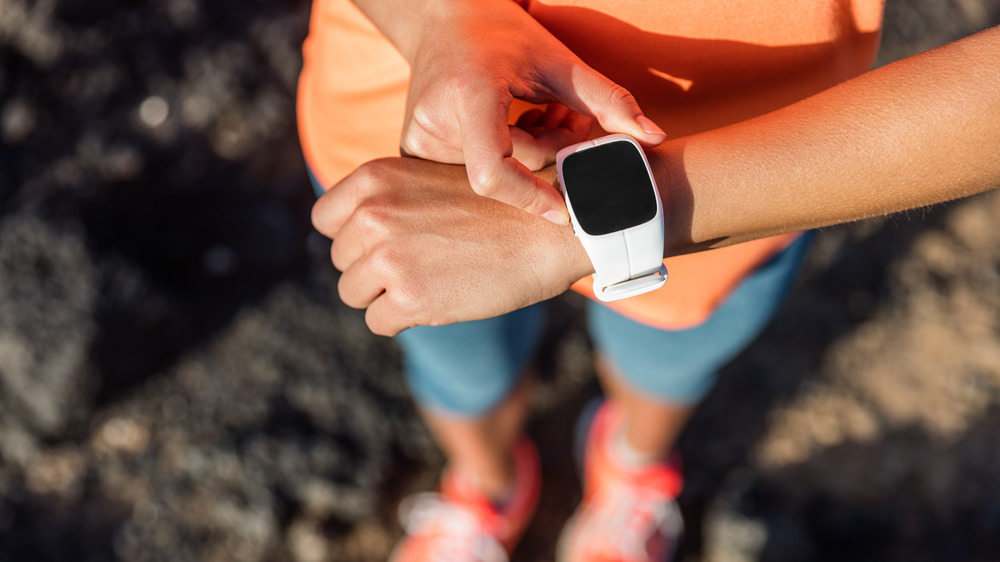When Your Heart Rate Gets Too High During HIIT, This Is What Happens
HIIT stands for high-intensity interval training, so when you embark on one of these workouts, you already know you're in for a challenge. But can you push it too hard? If so, what happens?
It's helpful to know, first, what constitutes an HIIT workout. According to The New York Times, it can be any exercise that pushes you to an uncomfortable (but not painful) state, rotated with equal or lesser length periods of lighter intensity. "A lot of people are very competitive with themselves,” fitness coach Alex Chriest told the Times. "When they see on the heart rate monitor that they are in the range, it is almost like a game. It's not a subjective feeling of 'I think I'm pushing myself hard enough.' You walk away knowing you got a lot of benefit from it."
A heart rate monitor is recommended for HIIT because the entire goal of the workout revolves around those cardiac beats-per-minute. During your high-intensity work, you want to be working at 80 to 95 percent of your maximal heart rate, according to Honor Health.
Know your maximal heart rate before you start
To find out your maximal heart rate, subtract your age from 220, which is the fastest rate a human heart can beat in a minute. So, if you're 40 years old, your maximal heart rate would be 180 beats per minute. An HIIT workout would constitute getting your heart rate up for sustained periods of work between 144 and 171 beats per minute.
In the case of HIIT, more isn't always better. You never want to push until you feel faint or actually pass out, vomit, or feel chest pain. If any of these happen, you should stop exercising immediately. High-intensity exercise has been proven to have great cardiovascular benefits, according to The Cleveland Clinic. However, for a small group of people who have heart abnormalities, known or unknown, very high intensity workouts can result in heart rhythm problems.
So, as with all things, HIIT is most effective when it is moderated. Aim for that window of 80 to 95 percent of maximal heart rate for short intervals of time, but this workout is not the occasion to go testing the maximum limits of your heart.


